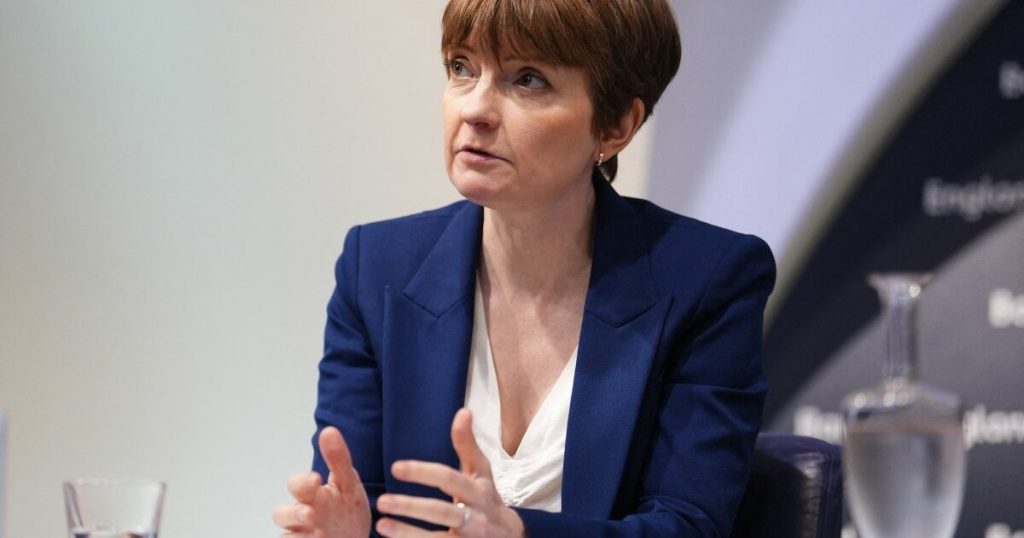The Bank of England (BoE) embarked on a significant monetary policy shift in response to escalating economic pressures, primarily stemming from the imposition of US tariffs. On Thursday, the central bank announced a quarter-point reduction in its key interest rate, bringing it down to four percent, the lowest level in two and a half years. This decision reflected the BoE’s proactive stance in mitigating the potential adverse effects of trade tensions on the UK economy. While the bank acknowledged that the direct impact of the tariffs has been less severe than initially anticipated, it highlighted the persistent uncertainty surrounding global trade as a significant factor weighing on market sentiment and business investment. The rate cut marked the fifth such reduction since August 2024, signaling a sustained effort to stimulate economic activity.
The BoE’s decision to lower interest rates was accompanied by an upward revision of its growth forecast for the UK economy. The central bank now projects growth of 1.25 percent for the year, a modest improvement from the previous estimate of one percent. This adjustment suggests a degree of optimism regarding the resilience of the UK economy in the face of external challenges. However, the BoE also emphasized the need for caution in future monetary policy adjustments. Governor Andrew Bailey stressed that while further rate cuts remain a possibility, they will be implemented gradually and judiciously, reflecting the bank’s commitment to maintaining price stability alongside supporting economic growth.
The decision-making process within the BoE leading up to the rate cut was marked by an unusual level of disagreement among policymakers. The vote on the rate reduction resulted in a split decision, requiring an unprecedented second vote to achieve a majority outcome. Initially, four members voted in favor of the quarter-point cut, while another four advocated for maintaining the existing rate. A single member initially proposed a larger half-point reduction but subsequently switched their vote to align with the governor’s preference for a quarter-point adjustment. This unusual sequence of events highlighted the complexities and differing perspectives within the Monetary Policy Committee regarding the optimal course of action given the prevailing economic conditions.
The market reaction to the BoE’s announcement was largely positive, with the British pound strengthening against other major currencies. This response reflected market expectations that the interest rate would remain at four percent for an extended period, providing a degree of stability and predictability for businesses and investors. Furthermore, analysts noted that market projections for future interest rate levels had been revised upwards following the BoE’s meeting, suggesting increased confidence in the UK economy’s ability to weather the ongoing trade disputes. However, the BoE also acknowledged the persistent inflationary pressures facing the UK economy.
Despite the BoE’s efforts to stimulate economic activity, recent data revealed a concerning trend of rising inflation. The Consumer Prices Index (CPI), a key measure of inflation, surged to a 3.6 percent annual rate in June, the highest level in 18 months. This unexpected jump was driven primarily by increases in motor fuel and food prices, highlighting the ongoing impact of global supply chain disruptions and geopolitical tensions. The BoE’s own projections indicate that inflation could peak at four percent in the coming months, adding to the challenges facing policymakers. These inflationary pressures complicate the BoE’s task of balancing its mandate to support economic growth with its responsibility to maintain price stability.
The UK economy faces a complex interplay of challenges, including rising unemployment, a recent economic contraction, and the lingering impact of US tariffs. Official figures show that the UK economy unexpectedly contracted for two consecutive months, signaling a potential slowdown in economic activity. Unemployment has also risen to a near four-year high of 4.7 percent, adding further pressure on the government to address the economic downturn. The increase in business taxes implemented by the Labour government, coupled with the baseline tariffs imposed by the US, has contributed to the economic headwinds facing UK businesses. While the BoE’s rate cut is intended to provide some relief, the long-term outlook for the UK economy remains uncertain given the ongoing trade disputes and the evolving global economic landscape.


